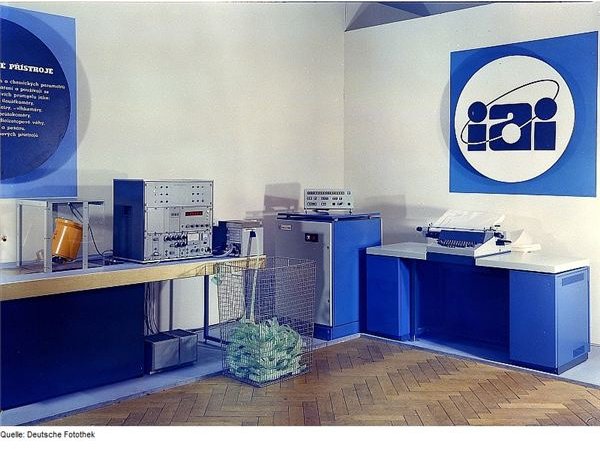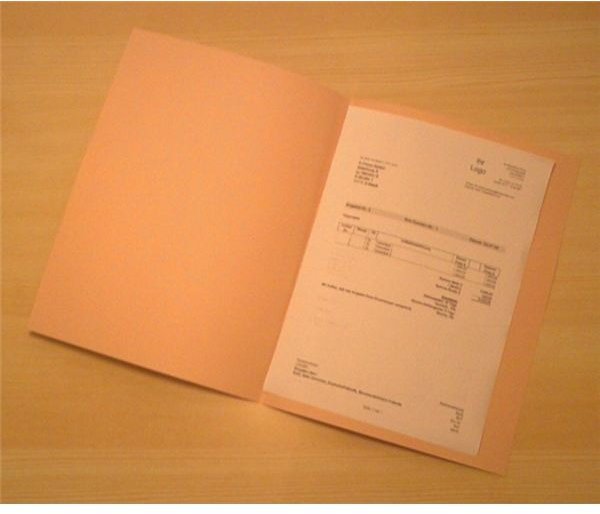Free Downloadable Example: Corporate Capitalization Policy for Fixed Assets
Corporate Policy for Fixed Assets as Tool for Uniformity in Capitalization Costs
The example of corporate capitalization policy for fixed assets featured in this article was patterned after the IRS Administrative Accounting Manual for Property and Equipment Accounting. The aim is to ensure that informational items presented as an example are all in accordance with the Internal Revenue Code on Uniform Capitalization of Costs, embodied under Sec. 1.263A-1.
The following sections shall describe the typical presentation of a corporate capitalization policy for fixed assets for the benefit of start-up business organizations that may wish to utilize the example as their template. In line with this, a version of this document is available for free download at Bright Hub’s Media Gallery under the same title as this article.
The Typical Example: Corporate Capitalization Policy for Fixed Assets
The Title of the Document: Assign a title that aptly describes the immediate goal of the document. In this article’s example, we made use of the title “Capitalization Policies for the Acquisition, Management, Sale and Disposition of Company-Owned Fixed Assets.”
Statement of the Policies’ Objective: Typically, this section of the document is sub-titled as “Purpose” — as it states an overview of the main objectives for developing and embodying the fixed asset rules and regulations into a set of corporate policies, all in accordance with the generally accepted accounting principles.
Statement of the Main Capitalization Guidelines: This section immediately presents the key capitalization guidelines for purposes of accounting valuation, upon procurement and during management of company-owned fixed assets. It should be carefully noted that the assets to which the policies apply are those intended for carrying out the business operations and not as part of the company’s merchandise inventory of items for resale.
As mentioned in a separate article entitled “Creating Capitalization Policies for Fixed Assets of a Corporation” it would be best practice to enumerate the different types of fixed assets actually used by the company, including those that have not yet been procured but form part of the company’s future business plans.

The Fixed Asset Capitalization Policies for Acquisition, Production, or Development
These are presented according to the classification of the fixed asset, which begins with a definition and/or description of an asset, in order to be classified under such category. There is a specific reference to the dollar value or amount as part of the qualifying condition.
These policies address the following important concerns for cost-capitalizations:
-
A determination of the fixed asset’s book value by considering not only the direct cost or the acquisition cost paid for its procurement but also the indirect costs directly related to the fixed asset procurement.
-
In cases where the fixed assets are internally produced, fabricated, or developed, the direct costs of the fixed assets refer to materials and labor, while the indirect costs are specifically enumerated to provide clear and concise guidelines as to which are capitalized or treated as outright expenses.
-
Policies about fixed assets that require pre-production costs contain the qualifying conditions for the latters’ recognition as capitalized costs. Definition of preproduction cost and their examples, i.e. interest on funds solicited through bank borrowings or fees paid for the importation and storage of the raw materials used, are also provided.

Fixed Asset Capitalization Policies for Renovation, Overhaul, or Repairs: These are general policies applicable to all types of expenditures that state the dollar amount and future years’ benefits derived from the renovation, repairs, or overhaul of the fixed asset as qualifying conditions for its capitalization.
Fixed Asset Depreciation Policies: The applicable policies include the fixed asset depreciation method. A chart containing the type of asset to be depreciated, its corresponding residual values, as well as estimated useful life is deemed as the best method of presentation for this information.
The policy should likewise incorporate the IRS procedure required for those instances when the method of depreciating tangible assets are changed. An application for change of accounting method should be submitted to the IRS to seek the commissioner’s approval for the change in depreciation method.
Fixed Asset Disposition Policies: These policies state the persons tasked and authorized to determine the obsolescence and eligibility for retirement of a specific fixed asset. Disposition policies will likewise state the required documentation to support recommendations for retirement and their methods of disposal.
-
The policies take into consideration that an auction sale of the retired fixed asset would be the best practice for fixed asset disposition; hence the submission of the mechanics pertaining to the proposed auction event shall be required for every occasion that it takes place. Mechanics will include the time, date, bidding notifications, criteria for the selection of the auction company, and the selection of a committee to oversee the entire auction process on behalf of the company.
-
Donating the fixed assets and the requirements of the policies are similar to those required in an auction sale disposition but the supporting documents will be in accordance with the mechanics observed for donation procedures.
-
Recycling of the fixed asset is also an option, for which policies require that cost-to-benefit issues should be addressed by submitting similar requirements to those required for auction events and donations to charitable institutions. The main objective should center on the benefits that will be derived from recycling vs. the benefits derived from auction sale or donation.
-
In determining the standard for benefits, the company may hold the policy open, since the benefits of donation may prevail if it will contribute to the betterment of the society in terms of living conditions, health and education.
The informational sections contained in our downloadable example of corporate capitalization policy for fixed assets are merely suggestions for best practices. The example may serve as a template in terms of form and outline but the contents may be revised, replaced, or deleted according to what is applicable to the user’s business organization. The example should not be misconstrued as a legal, prescribed, or official form but should be modified according to the user’s purpose.
Reference Materials and Image Credit Section:
References:
- Administrative Accounting Section 6. Property and Equipment Accounting – https://www.irs.gov/irm/part1/irm_01-035-006.html
- Internal Revenue Code: Uniform Capitalization costs – https://www.timbertax.org/research/regulations/26cfr1.263A-1/
Image Credits:
